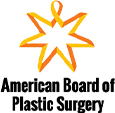Over time, the effects of sun exposure and age lead to loss of skin tone and thickness. In addition, skin discoloration can occur. A chemical peel can help you achieve smoother, more radiant skin by removing damaged skin cells to reveal new skin beneath. Customized chemical peels are offered at Weider Plastic Surgery to treat your unique skin concerns.
Click any of the links below to jump to that section:
What is a Chemical Peel?
During a chemical peel, solutions are applied to your face that remove the damaged outer layers of the skin. This allows for new collagen formation in the remaining, deeper layers of the skin. The end result is smoother, younger appearing skin with more uniform skin tone. Depending on your individual needs, Dr. Weider will recommend the appropriate type of peel. At Weider Plastic Surgery, light, medium and deep peels are available. Chemical peels are often combined with other procedures such as facelifts and eyelid lifts for comprehensive facial rejuvenation.
"Very compassionate, a very good listener! The first surgeon to listen to me and my specific wants without telling me what he thinks I need. (i.e. double d’s!) Staff is friendly and very helpful. Could not ask for better overall treatment or results. Highly recommend!!!!" Read More >
Who can Benefit from a Chemical Peel?
Chemical peels, which involve the application of special peeling agents to the skin, remove the outer layers of sun damaged skin. There are numerous types of peels that have been used successfully. They range from mild peels that can be done without any type of anesthetic to medium and deep peels that penetrate further into the surface of the skin. Chemical peels are often effective at treating the following skin conditions:
- Acne scars
- Spots from sun damage
- Fine lines and wrinkles
- Skin pigment irregularities
- Rough skin and scaly patches
- Scars
- Sun-damaged skin
Chemical Peel Treatment
Light Chemical Peel
For those patients with uneven pigmentation or very fine wrinkles, a light chemical peel is often an excellent choice. This is a superficial peel that removes the outermost layer of skin and leaves you with a healthy glow. Light chemical peels can be performed without anesthesia and with no downtime. The most commonly used light peeling solutions include alphahydroxy acids, glycolic acid, lactic acid, and salicylic acid. These are mild agents, and the peel can be repeated on a weekly basis if needed. During a light chemical peel:
- Your face is gently cleansed.
- The solution is applied to your skin and left on for five to ten minutes.
- You may feel some tingling or mild stinging.
- The solution is then washed off.
Medium Chemical Peel
If you have deeper wrinkles, more extensive sun damage, and uneven skin tones, then a medium depth peel may be the best choice for you. TCA (trichloroacetic acid) will be used to perform the peel. Unlike a light peel, the medium depth peel will penetrate below the epidermis into the top layers of the dermis. Typically the procedure and follow up include:
- Cleansing the skin
- Application of the chemical solution, which can cause some stinging or burning
- Neutralizing the chemical solution with cool compresses
After the procedure, a moisturizing ointment will be applied to the treated areas. Your skin may have a red or brown hue for up to six weeks after the procedure. At this point, it will be smoother and have a healthy glow with more uniform pigmentation and a fresher appearance
Deep Chemical Peel
Those patients with the deepest wrinkles, the most sun damage, and the most uneven pigmentation may opt for a deep chemical peel. Dr. Weider uses TCA or phenol to perform deep peels, and they are performed with sedation.
While these peels necessitate the longest recovery period, they also provide the most benefit for patients in need of rejuvenation of damaged skin. The typical procedure is as follows:
- Weider will prescribe a pre-treatment skin regimen to be used for six weeks prior to the peel. This topical cream prepares the skin for the peel.
- On the day of the peel, you will be given intravenous sedation so that you are comfortable throughout the procedure.
- Your skin will be cleansed.
- The peeling solution will be brushed on and left in place until the peel has reached the proper depth. At this point, the peel is neutralized.
- Your skin is then covered with petroleum jelly to soothe and protect it.
Dr. Weider will provide you with oral pain medicine to manage the discomfort from the procedure. You will be instructed in how to care for your skin as crusts develop for the first few days. You can expect to have swelling for about ten days and a pink hue to the skin for several weeks. In most cases, your new smoother, younger appearing skin will last for up to ten years.
Aftercare for Chemical Peel
After medium to deep chemical peels, you are likely to experience some mild swelling and discomfort. However, this can be controlled with ice packs and medications prescribed by Dr. Weider. He will also recommend that you keep your face moist with a recommended ointment. You will likely experience some crusting of the skin, but most patients are free of crusts after about a week. Redness may persist for several weeks.
Your new skin will usually remain bright pink to red in the weeks following the procedure. After about two weeks or so, most patients can safely apply makeup to conceal this temporary color change. However, some pinkness may remain for up to six months.
Above all, in the months following treatment, it is important to protect the treated area from the sun until all the color has returned to normal. Using sun protection regularly will help to maintain your results and reduce the chance of any new sun damage to your skin. If you must be in the sun, apply a strong sun block with an SPF of 30 or higher and shade your face with a hat or visor. If resurfacing was performed around the eyes, it’s best to also wear good quality sunglasses with UVA and UVB 100 percent protection.
Contact Weider Plastic Surgery Today
Dr. Weider is board certified by the American Board of Plastic Surgery and has been performing facial rejuvenation procedures in Dallas, TX since 1999. During your consultation, he will answer all of your questions and formulate an individualized plan to help you achieve your cosmetic goals. At Weider Plastic Surgery we are dedicated to ensuring that every patient’s visit to our office is a comfortable, educational and pleasurable one.






